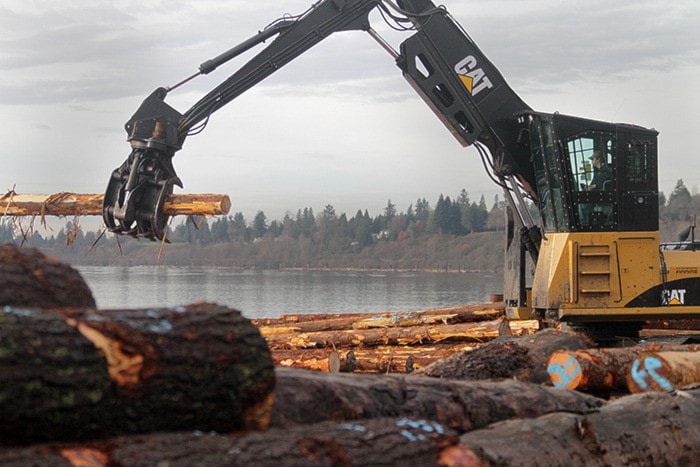Some pathways for Maple Ridge’s future has been sketched out in a 100-page report perused by council Monday.
The Commercial and Industrial Strategy, 2012-2042, which will be reviewed by staff and politicians and eventually the public, doesn’t suggest using the Agricultural Land Reserve to make room for industrial expansion.
“We’re recommending that it’s a risky strategy to base hopes on getting lands out of the ALR,” Jean-Pierre Raulot-Lapointe, with GP Rollo and Associates, explained after the meeting.
Because that land may not be approved for exclusion from the reserve, other options need to be considered, he added.
The comment seems to contradict Maple Ridge’s official community plan, which says the district could try to exclude farmland to create employment-generating lands.
Coun. Michael Morden said the report reflects the recent affirmation of the Agricultural Land Commission’s main mission – to protect farmland.
“This ship has sailed,” said Morden.
“It’s about meeting their mandate. It’s not about spending all this time dealing with permit applications.
“Everybody needs to get over that.”
Land commission chair Richard Bullock said earlier this year that the commission will be cutting back the time it spends reviewing exclusion applications.
“The signs that we’re getting from the Agricultural Land Commission, whatever comes out, will be it, for a long time,” added public works manager Frank Quinn.
Any applicant who tries to remove land now must wait five years before reapplying.
In a similar vein, the report also says that development should be focused within Maple Ridge’s urban boundaries rather than looking for vacant land outside the built-up areas of the district.
“For me, their finding reiterated the importance of that,” planning director Christine Carter told council.
Two applications to exclude land on the west side of 105th Avenue for development are now before the ALC, while the district could make its own exclusion application for land east of 105th Avenue.
Both requests would be part of the district’s long-term plan for developing the area.
The report points out half a dozen areas where Maple Ridge can expand its industrial capacity within its current urban borders:
• Ministry of Transportation and Infrastructure lands beside the Haney Bypass comprise 38 acres, could be one site where light industry could develop, although slopes and streams complicate development;
• up to 60 acres could be used for industry or light manufacturing at 232nd Street and 128th Avenue, along the approaches to Golden Ears Provincial Park – possibly zoning could include accommodation for artisans through live-work living spaces.
• Albion Industrial Park also could be used for industrial expansion, although infrastructure improvements would be needed;
• farther afield, along the Lougheed Highway near 250th Street, two parcels totalling 20 acres on either side of Kwantlen First Nations property could be developed, although they also have slope and stream issues.
The report says that Maple Ridge has time to find industrial land, but it should start the preparations now.
If council heeds or incorporates the advice, plans for Albion flats, along Lougheed Highway and 105th Avenue, could also change.
One recommendation says employment should be a “major component” of developing Albion flats.
Raulot-Lapointe told council that he foresaw any retail in the area serving only the local community rather than big box stores.
That contrasts with Maple Ridge’s current concept plan, which calls for big box stores, light industry and recreational uses throughout Albion flats.
“The recommendations were clear, that there needs to be an industrial component and we need to have a look at that to see what generates jobs for us,” Morden said.
By 2040, Maple Ridge will need between another 170 and 230 acres for industrial use, in order to provide local jobs for a growing population.
When it comes to shopping, the report recommends no big new shopping areas covered with big box operations.
Instead, the downtown should continue to be the priority for “all types of retail,” including big box stores.
There’s “no urgent need” to find additional commercial land, especially when the future development of Albion flats is considered, nor should industrial land be converted to shopping malls, says the report.
Instead, it says the downtown incentive plan should be continued, land assembly should be encouraged, and perhaps there should be beautification program, where business owners can get matching grants.
Metro Vancouver has projected 48,000 total jobs in Maple Ridge by 2041, up from a present 23,000.
But Maple Ridge is already doing better than other cities in creating local jobs, the report points out.
In 2006, about 35 per cent of Maple Ridge’s population were locally employed. Only Surrey, at 38 per cent, had a higher percentage.
By comparison, Langley township’s local employment rate was 23 per cent, while New Westminster’s was only 20 per cent.
Coun. Al Hogarth said most of the report’s findings were expected. The development of the industrial area at the far north of 256th Street will take years and still depend on extension of Abernethy Way east to 256th Street. But that road project will cost millions and could be a decade away.
Hogarth supported the plan for 256th Street, but it will take time to develop, adding other purposes should be considered such as recreational, tourism or education.
“Are there other uses that could happen there?”
Council will review a staff synopsis of the report in the new year, with open houses to follow.
